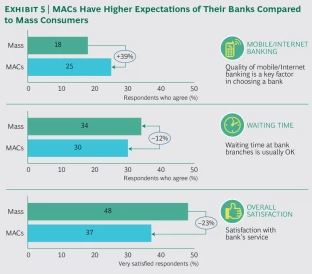Introduction:
In the fast-paced world of consumerism, staying up-to-date with the latest technological advancements and lifestyle upgrades often requires financial flexibility. Consumer durables loans have emerged as a popular financial tool, enabling individuals to acquire appliances, electronic gadgets, and other durable goods without straining their immediate finances. This article aims to provide a comprehensive overview of consumer durables loans, exploring their definition, types, benefits, considerations, and the impact they have on both consumers and the economy.
I. Consumer Durables Loans: An Overview
A. Definition:
Consumer durables loans, also known as consumer durable financing, refer to a type of loan specifically designed to finance the purchase of durable goods such as appliances, electronics, furniture, and other long-lasting items. These loans offer consumers the flexibility to spread the cost of these purchases over a specified period, making high-value items more accessible.
B. Types of Consumer Durables Loans:
1. Retailer Financing:
Many retailers partner with financial institutions to offer in-store financing options. Customers can apply for loans directly at the point of sale, often with promotional interest rates or deferred payment options.
2. Personal Loans:
Consumers can also opt for personal loans to finance durable goods. These unsecured loans provide flexibility in how the funds are used, and borrowers can choose from various lenders based on interest rates and terms.
3. Credit Card Financing:
Credit cards often provide a convenient means of financing consumer durables. Consumers can make purchases on their credit cards and choose to pay off the balance over time, taking advantage of interest-free periods or installment options.
II. Benefits of Consumer Durables Loans:
A. Affordability and Accessibility:
Consumer durables loans make high-value purchases more affordable by allowing consumers to spread the cost over a period that suits their financial situation. This accessibility ensures that individuals can enjoy the benefits of durable goods without facing a significant upfront financial burden.
B. Upgrading Technology:
In the rapidly evolving world of technology, staying current often involves frequent upgrades. Consumer durables loans empower individuals to stay ahead by providing a financial avenue to replace outdated gadgets or appliances with the latest models.
C. Flexible Repayment Options:
These loans typically come with flexible repayment options, including monthly installments or deferred payment plans. This flexibility caters to the diverse financial situations of consumers, allowing them to choose a repayment schedule that aligns with their income and budget.
D. Build Credit History:
For individuals looking to build or improve their credit history, responsibly managing a consumer durables loan can contribute positively to their credit score. Timely repayments demonstrate financial responsibility to credit reporting agencies.
III. Considerations Before Opting for Consumer Durables Loans:
A. Interest Rates and Fees:
Consumers should carefully examine the interest rates and any additional fees associated with consumer durables loans. While some loans may offer promotional interest rates, it’s crucial to understand the long-term cost of financing and any hidden charges.
B. Loan Terms and Conditions:
Understanding the terms and conditions of the loan is essential. Borrowers should be aware of the repayment schedule, any penalties for early repayment, and the consequences of defaulting on payments.
C. Budgeting and Affordability:
Before committing to a consumer durables loan, individuals should assess their overall financial situation and create a budget. Understanding one’s ability to make timely repayments is crucial to avoid financial strain.
D. Alternatives and Comparison:
Exploring alternative financing options and comparing terms from different lenders is a prudent step. Whether it’s retailer financing, personal loans, or credit card options, understanding the various choices available can help consumers make informed decisions.
IV. Impact on Consumers and the Economy:
A. Consumer Spending and Economic Growth:
Consumer durables loans play a significant role in stimulating consumer spending, contributing to economic growth. As individuals feel more financially empowered to make durable goods purchases, industries related to electronics, appliances, and furniture experience increased demand.
B. Technological Advancements:
The accessibility provided by consumer durables loans fuels technological advancements. Consumers can more readily embrace new technologies, contributing to innovation and competitiveness within the electronics and technology sectors.
C. Financial Inclusion:
Consumer durables loans contribute to financial inclusion by providing individuals with the means to acquire essential items that may otherwise be out of reach due to financial constraints. This inclusionary aspect promotes economic equality and access to modern conveniences.
D. Responsible Borrowing and Financial Literacy:
These loans offer an opportunity for individuals to engage in responsible borrowing and develop financial literacy. Understanding the terms of a loan and managing repayments responsibly contribute to long-term financial health.
V. Conclusion:
Consumer durables loans have become integral to the modern consumer experience, providing a financial bridge for individuals to acquire essential and desired durable goods. As consumers continue to seek ways to enhance their lifestyles and keep pace with technological advancements, these loans offer a viable solution. However, responsible borrowing, thorough consideration of terms, and awareness of financial implications are crucial aspects of making informed decisions. By navigating the landscape of consumer durables loans with diligence, individuals can leverage these financial tools to improve their quality of life while contributing to economic growth and technological progress.
